In my previous article in this series I looked at a few of the best ways to listen to music on the Raspberry Pi 5.
For this article, I’m going to continue on the multimedia theme by examining internet radio options. We maintain a roundup of the finest internet radio software for Linux in this roundup. Let’s take a look at the top entries from a Raspberry Pi 5 perspective.
All testing is with a Raspberry Pi 5 with 16GB of RAM housed in a fanless case using the latest version of Raspberry Pi OS (based on Debian 13).
Tuner
Tuner is billed as a minimalist radio station player. This program saw its first release in June 2020. The open source program is written in Vala. It offers access to a huge range of stations as it taps into the radio-browser.info catalog, a community driven project with an open API which collates internet radio and TV stations.
Tuner’s developer doesn’t provide a package for the Pi. However, there is a Flatpak available for ARM. Install it with the command:
$ flatpak install flathub com.github.louis77.tuner
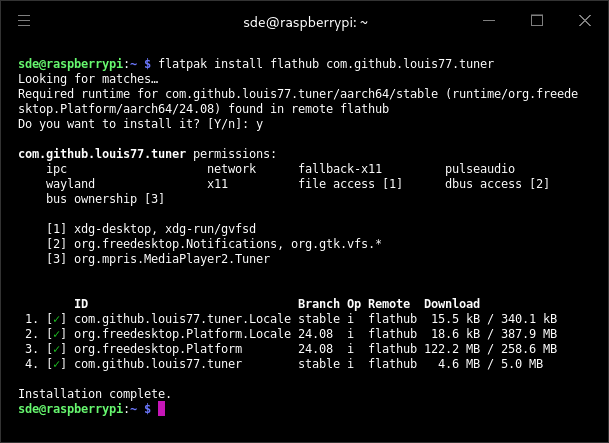
Installation proceeds with no issues.
Here’s Tuner in action.
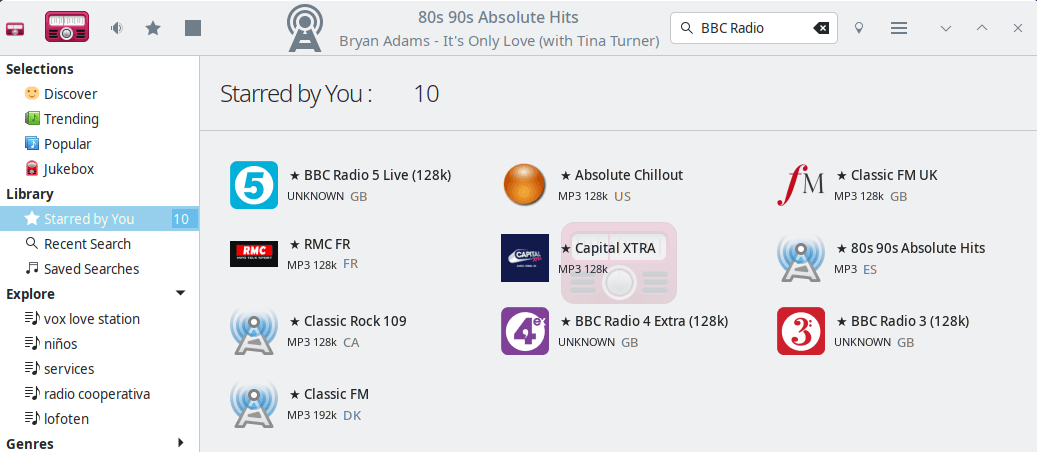
Tuner performs well on the Pi.
ps_mem reports that memory usage is around 128MB.
Shortwave
Shortwave is my current personal favourite internet radio player for Linux in general. There’s a package for Shorteave in the Raspberry Pi OS repositories which is installed with the command:
$ sudo apt install shortwave
You get version 5.0.0. That’s the current version. I can also install this version using Flatpak. I would only opt for the Flatpak version if it’s a newer release than what’s available in the repositories.
I love Shortwave. It has the best recording features, it supports background playback, and offers a huge library of stations with accurate search results.
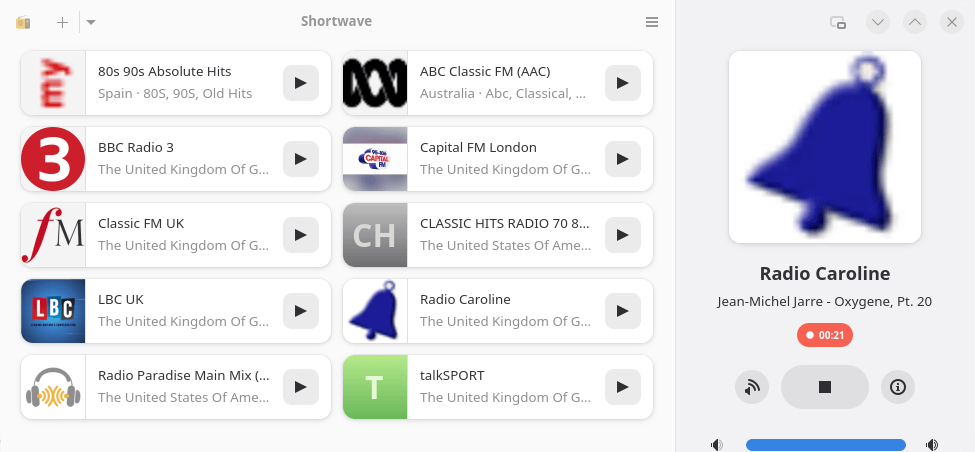
Shortwave does consume more RAM than Tuner, with ps_mem reporting memory usage around 220MB. Depending on what desktop you’re running on the Pi 5 and the RAM model, Shortwave shouldn’t consume too much memory. As I’m using it with the 16GB model under KDE Plasma, everything is fine.
I mostly leave the Pi 5 playing internet radio with Shortwave all day. As I passively cool my Pi, it serves well even for late night classical music.
If you prefer the command-line, I also regularly use PyRadio on my Linux machines. For the Raspberry Pi 5 there isn’t a package available for PyRadio and there’s no Flatpak or snap available either. Under the circumstances, let’s build the source code. As the name suggests, PyRadio is a Python program. First install some dependencies:
sudo apt-get install \
python3-full \
python3-pip \
python3-rich \
python3-requests \
python3-netifaces \
libpython3-all-dev
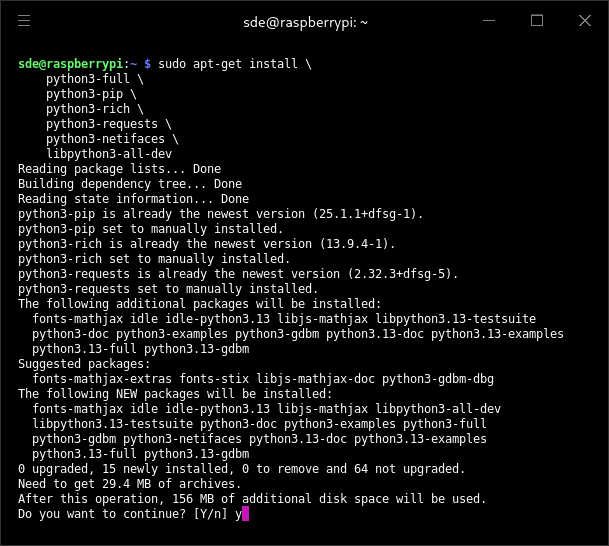
The developer provides an installation script. Before downloading it, install pipx:
$ sudo apt install pipx # my system already has pipx installed
Now let’s grab the installation script.
$ wget https://raw.githubusercontent.com/coderholic/pyradio/master/pyradio/install.py
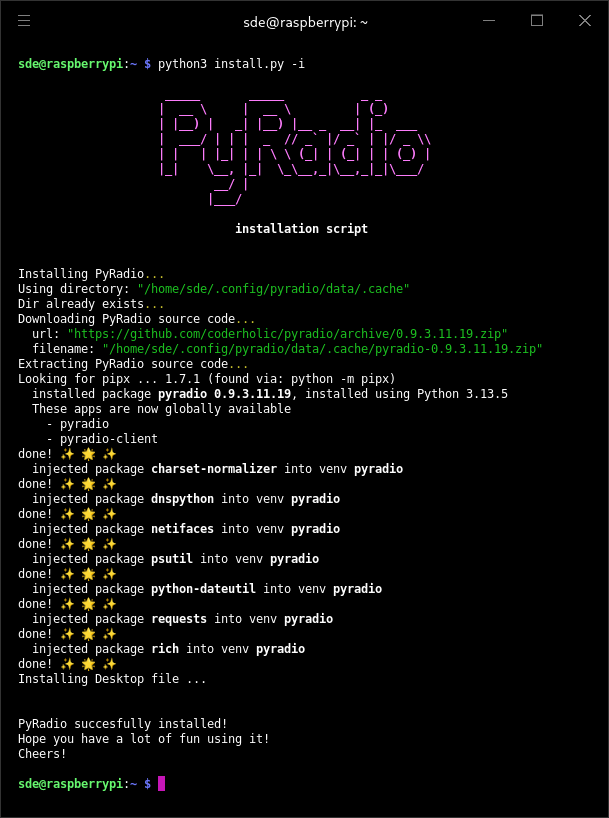
Here’s PyRadio in action.
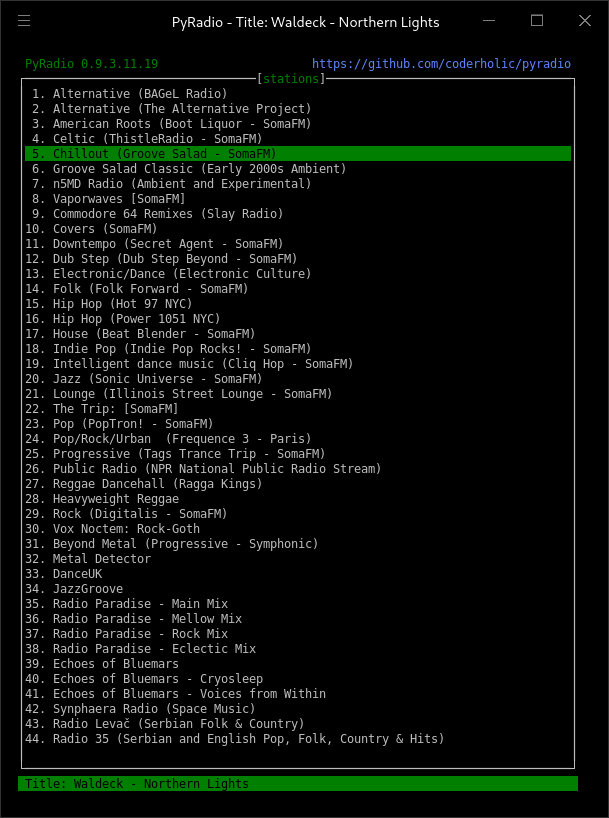
Note, PyRadio uses vlc for playback by default. ps_mem reports that PyRadio consumes around 99MB of RAM and vlc a further 25MB of RAM. PyRadio is a great option if you prefer the command-line.
All articles in this series:
| Raspberry Pi 5 Series | |
|---|---|
Hardware | |
| iRasptek Starter Kit | All the kit you need to get started with the Pi 5 |
| Pironman 5 Case Review | Transform the Pi 5 into a beautiful desktop mini PC |
| Passive Cooling the Pi 5 | Passively cool your Pi 5 the right way. Silent yet cool |
| Benchmarking | Benchmarking the Pi 5 against an Intel N100 mini PC |
| Overclocking | Let's increase the clock speed of the BCM2712 SoC |
| Power Consumption | Compare the power consumption of the Pi 5 with Intel Mini PCs |
| 2.5Gbps Networking | Improving the wired performance of the Pi 5 |
| WiFi | Improve WiFi performance of the Pi 5 |
| Desktop PC | Is the Pi 5 good value compared to an Intel N100 Mini PC? |
Configuration | |
| raspi-config | Useful text-based tool to configure the Pi 5 |
| PiGro | GUI tool that streamlines the process of managing the Pi 5 |
| Increase Swap Memory Size | Increase the swap size from 512MB to 2GB |
| ZRAM swapdrive | Simple script to use a ZRAM swapdrive instead of a swapfile |
Software | |
| Installing Software | Different ways to install software on the Pi 5 |
| df snap pollution | Replace df with dysk |
| Ollama GUI | Running Large Language Models on the Pi 5 |
| Music Players | GUI and TUI music players explored |
| Internet Radio | Exploring the best options for both GUI and TUI software |
| Many software articles are planned. Stay tuned! | |
